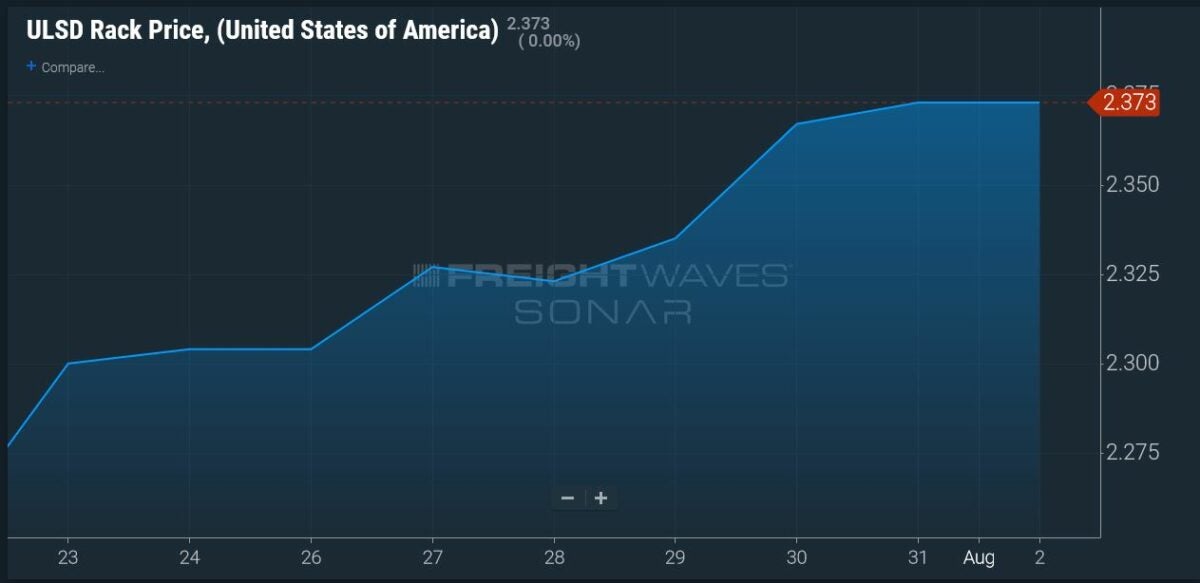The weekly Department of Energy/Energy Information Administration (DOE/EIA) average retail diesel price resumed its upward course Monday, climbing 2.5 cents to $3.367 a gallon.
The increase comes after last week’s decline of 0.2 cents a gallon, the first after a 12-week run of increases.
This week’s price is the highest since Oct. 22, 2018. It is up 94.3 cents a gallon from where it stood at this time last year.
But as has oddly seemed to be the case recently, the increase came on the same day as a significant decline in the price of ultra low sulfur diesel on the CME commodity exchange. There were commodity market declines of several cents per gallon on June 28, July 6, July 19 and now Monday. The previous ones were all followed by increases in the DOE/EIA price the subsequent Monday, as the overall upward trend in oil prices ultimately regained those Monday declines.
Today’s increase comes after gains in the commodity market last week of roughly 4 cents per gallon. In the wholesale market for diesel, the national average price found in the ULSDR.USA data series in SONAR climbed 7.3 cents per gallon between July 23 and Monday. Retail prices move closer to changes in wholesale prices than they do to prices in the commodity markets.

The sharp decline Monday was generally attributed to fears over slowing economic activity brought about by the worldwide spread of the delta variant of COVID-19.
Markets also were reacting to a Reuters report that OPEC members had increased their July output by 610,000 barrels a day. The Reuters report is always the first out of the gate when a new month begins, and is sometimes questioned for its speed; other reports about OPEC output generally come five to 10 days into the new month.
If OPEC did add that much oil to the market, it’s a significant move. For example, S&P Global Platts reported last month that OPEC’s members in July added 480,000 barrels a day of supply.
More articles by John Kingston
Three more states waive targeted hours-of-service rules for 30 days
Court decision serves as primer on pitfalls, possibilities of truck leasing
A transformed Triumph Bancorp talks its hot market and future in call with analysts







